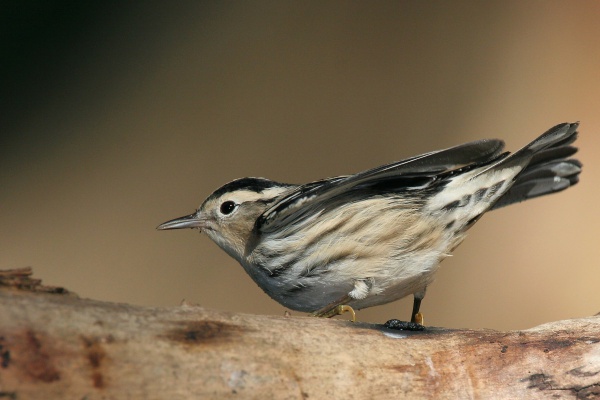Facts About Black-and-white warbler
The black-and-white warbler is a distinctive species among New World warblers, being the only member of its genus, Mniotilta. This striking bird breeds in northern and eastern North America and migrates to regions such as Florida, Central America, and the West Indies, occasionally reaching as far south as Peru. Some individuals have even been observed in western Europe.
Measuring approximately 12 cm, the black-and-white warbler is easily identified by its bold black-and-white streaks, which give it a unique, almost "flying humbug" appearance. Unlike other warblers, it forages like a nuthatch, climbing up and down tree trunks and branches in search of insects and spiders.
One of the bird's unique features is its song, a high-pitched "see wee-see wee-see" or "weesa weesa weetee." It has several distinctive calls, including a hard "tick" and a soft, thin "fsss." For nesting, these warblers construct cup nests on the ground in broadleaved or mixed forests, typically laying 4-5 eggs.
In terms of appearance, the plumage of the black-and-white warbler varies between males, females, and juveniles, though all exhibit the characteristic black-and-white pattern of the species. This pattern, along with their unique foraging behavior, makes them easier to identify compared to other warblers. These birds are migratory, breeding in deciduous forests and occupying a wider range of habitats during the non-breeding season.
The black-and-white warbler is currently classified as Least Concern by the IUCN. However, its population is declining due to habitat loss and degradation, with pesticides also contributing to past decreases in population. The species faces ongoing threats from forest fragmentation and pesticide use.
Behaviorally, this warbler is known for its high-pitched song and nuthatch-like foraging style, primarily feeding on insects and other arthropods. During the breeding season, males establish territories and attract females, who then build cup-shaped nests on the ground. They care for their young until they fledge, though nests are sometimes parasitized by brown-headed cowbirds.

 El Salvador
El Salvador